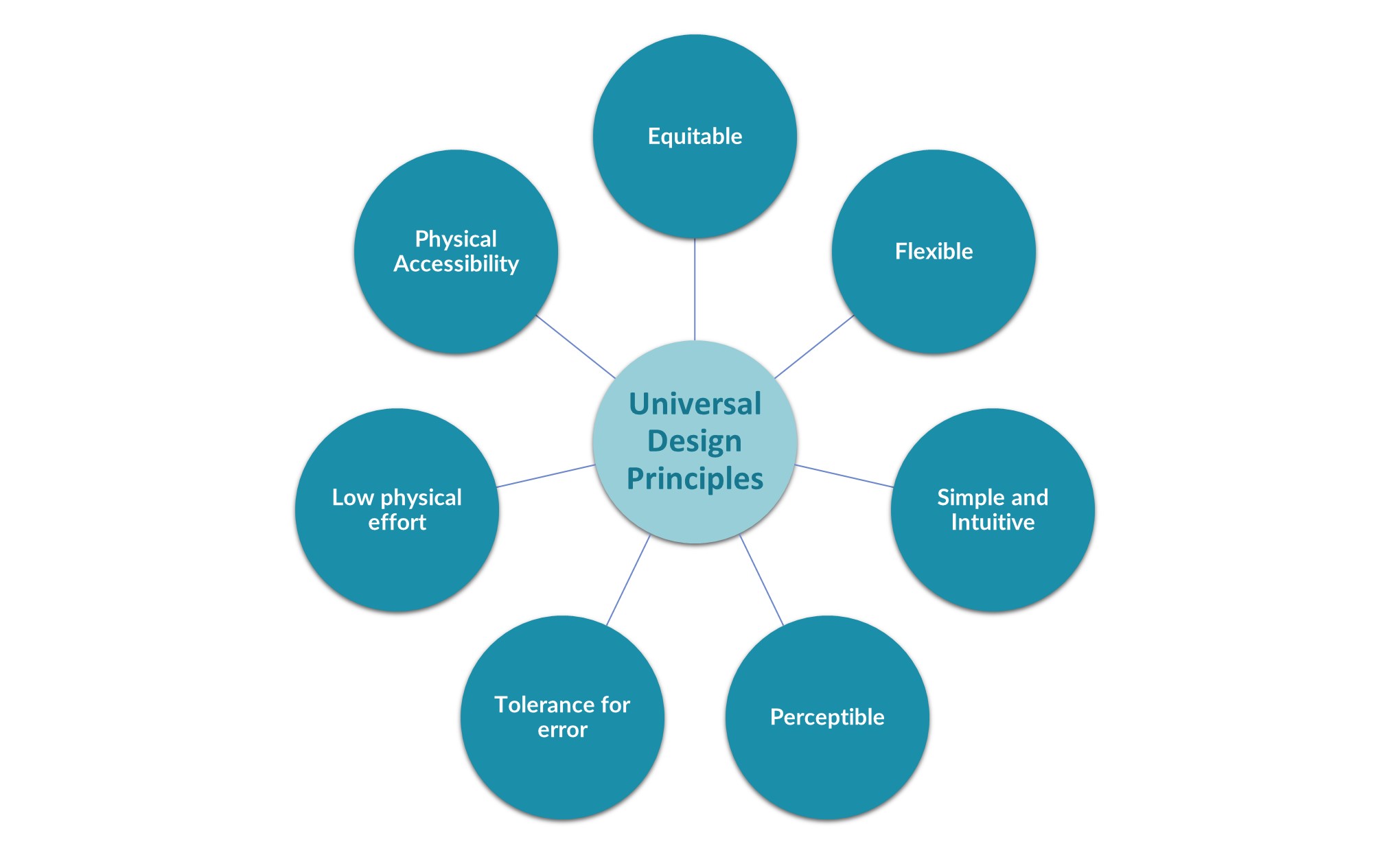Universal Design
Students fall along a continuum of diversity; post-secondary education environments in many aspects mirror the microcosms of the diverse society in which we live, with student populations encompassing a range of abilities, cultural backgrounds, learning styles and educational needs. Ensuring that teaching practices maximise the learning for the widest possible array of characteristics present within the student cohort, enables an inclusive environment to be created.
Universal design refers to ‘design of products and environments to be usable by all people to the greatest extent possible, without the need for adaptation or of specialised design’1. In education, this means developing course content, teaching materials and delivery methods to be accessible to and usable by students across the broadest diversity ranges. Inclusive education facilitates the access, participation and success of students. This approach acknowledges that students with disability or other needs may learn differently, but are not less academically capable.
Curricula and course material is considered to be universally designed if:
- Students can interact with and respond to curricula and materials in multiple ways
- Students can find meaning in material (and thus motivate themselves) in different ways
- Web-based course material is accessible to all
- Information is presented in multiple ways.
Figure 1: Principles of Universal Design

The Principles of Universal Design in Education
The seven generic principles of universal design can be adapted to reflect the educational setting. Whilst the examples provided are not exhaustive, they provide an understanding of the aim of each principle:2
1. Equitable educational experience
- Instruction is understandable and relevant to all students, and accessible to students with a diverse range of abilities
- Information is available in various formats at the same time and same cost (i.e. workbooks are available on disk, in print form and on the internet)
- Assessment is carried out in a flexible manner
2. Flexible material and instruction
- Students can choose how they access material (i.e. formal lectures are supported by online material, labs and tutorials are available at different times of the day and week)
- Material is designed to accommodate the widest range of users
- Material is adapted to suit all learning paces (i.e. lecturers pause after key points)
3. Predictable structure and instruction
- Material is easy to understand and logically sequenced, according to importance
- Instruction occurs in a predictable manner and format
- Material such as notes and websites are offered in a clear, easy-to-read format
- Feedback is adequate and timely
4. Perceptible information
- Information is communicated in multiple ways (i.e. visual and auditory)
- Websites follow the World Wide Web Consortium (W3C) guidelines
- Information is compatible with assistive technology
5. Mistakes are tolerated
- Learning hazards are minimised (i.e. a homepage link on all web pages allows the user to return to home if they make a mistake)
- Instruction anticipates variation of skill and ability
- Advanced notice about important tutorials and lectures is provided
- Students are encouraged to get help with proof-reading documents
6. Eliminate unnecessary physical effort
- Non-essential physical effort is minimised
- Students have the opportunity during class to change their posture or position (i.e. rest breaks are provided for longer sessions)
7. Physical accessibility
- Instruction is equally available to people with different physical characteristics and communication needs
- Learning environments cater for assistive technology.
Universal design can be applied to all aspects of instruction. As a disability practitioner, you can assist lecturers, tutors and all those involved in the course delivery to understand and utilise inclusive teaching practices, anticipating student needs in all aspects of the learning program. This includes online components, field trips and practical work. If all aspects of the teaching including assessment are thought through, it is possible to plan more effectively, saving time in the longer term. It is important to anticipate from the outset that there will be a diverse student population with a range of different learning requirements and ensure teaching staff prepare accordingly.
Curricula should be designed to be as accessible as possible, minimising the need for adjustments in response to the needs of individual students. Some very simple adjustments to teaching practice in lectures, seminars and tutorials can prevent students with disability becoming disadvantaged. In other cases, adjustments will need to be made in response to the needs of individual students. It is important to emphasis that universal design anticipates a diversity of learning styles and abilities without lowering academic standards.
Further Reading & Resources
References
1 Mace, R. 2008. About UD. The Centre for Universal Design. Sourced on 1 October 2014. Retrieved from http://www.ncsu.edu/ncsu/design/cud/about_ud/about_ud.htm
2 Bergstahler, S. 2012. Universal Design of Instruction (UDI): Definition, Principles, Guidelines, and Examples. Accessed on 1 October 2014. Retrieved from http://www.washington.edu/doit/Brochures/Academics/instruction.html

